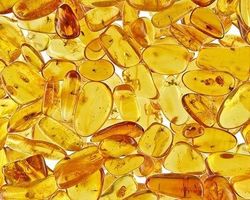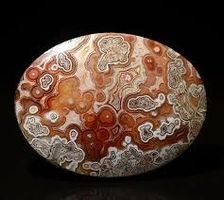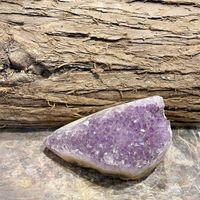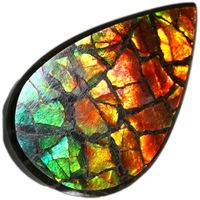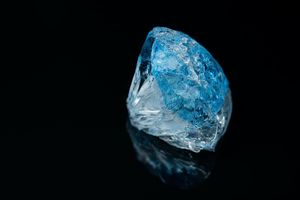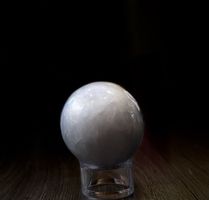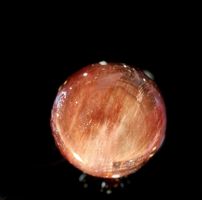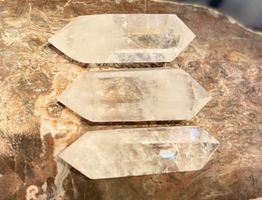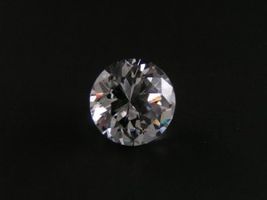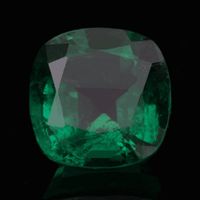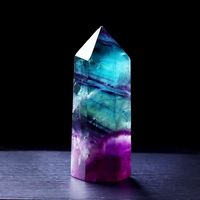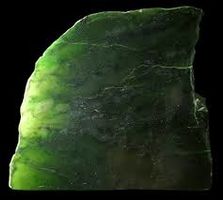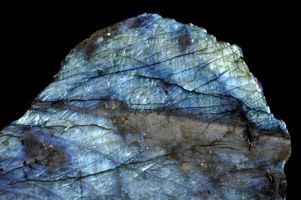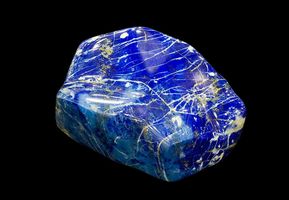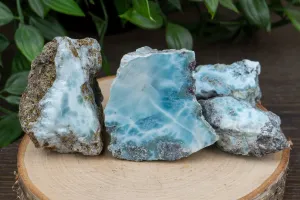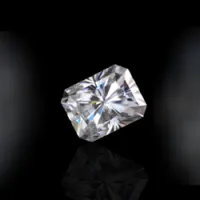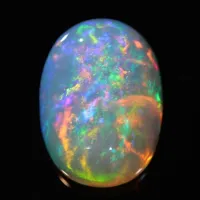Amber
Amber absorbs pain and negative energy, helping to alleviate stress. Amber clears depression, stimulates the intellect and promotes self-confidence and creative self-expression. It encourages decision-making, spontaneity and brings wisdom, balance and patience.
What is Amber? Amber is tree resin which has been fossilized into a stable state through the loss of volatile constituents and chemically changed after its burial in the ground. Amber can be found all over the world however most amber is found along the shores of the Baltic Sea in sands from 40 to 60 million years ago. There are five classes of amber which are determined by their chemical compositions. These Classes are called: amber, Baltic amber, fossil resin, succinite, and resinite. The colours of Amber
Yellow and Brownish Amber
Yellow or Brown Amber is the most common type of amber and can be found all over the world. These colours of amber make up more than two-thirds of the amber found in the world.
Healing Properties of Yellow or Brown Amber:
Amber absorbs pain and negative energy, helping to alleviate stress. Amber clears depression, stimulates the intellect and promotes self-confidence and creative self-expression. It encourages decision-making, spontaneity and brings wisdom, balance and patience.
How to Use:
Wear for prolonged periods, especially on the wrist or throat, or place as appropriate. If treating babies or children, it is beneficial for the mother to wear the stone first.
Black Amber
15% of the Amber found is Black. This amber is not pure fossilized tree resin but mixed with carbonized coal. When this Amber is held to the light it usually shines a different colour like dark red, blue or brown. Because of this the amber is not truly black and causes some people to contest that Black Amber doesn't even exist! With this Amber being so rare it is slightly more expensive to buy compared to the more common ambers, but there is less of a demand for it.
Healing Properties of Black Amber:
Black Amber has the same healing qualities of Yellow or Brown Amber but offers a more powerful vibration of protection that deflects and transmutes negativity.
How to Use:
Wear for prolonged periods, especially on the wrist or throat, or place as appropriate. If treating babies or children, it is beneficial for the mother to wear the stone first.
Green Amber
2% of the Amber found is green and is a very popular pigment. Most Green Amber is found in the Dominican Republic. The more bold the colour the more expensive it is. The tint can be enhanced by treating the amber with heat which will make it become more transparent!
Healing Properties of Green Amber:
Amber absorbs pain and negative energy, helping to alleviate stress. Amber clears depression, stimulates the intellect and promotes self-confidence and creative self-expression. It encourages decision-making, spontaneity and brings wisdom, balance and patience.
How to Use:
Wear for prolonged periods, especially on the wrist or throat, or place as appropriate. If treating babies or children, it is beneficial for the mother to wear the stone first.
White Amber
White Amber is extremely rare and only accounts for 1-2% of the ambers found which means its only slightly more common than Red or Blue Amber. White amber is also called “Royal white” or Bony'' due to its unique texture. Unlike green amber white Amber is never treated and is kept pure and praised for its decorative swirls of grey, green, honey, blue or butterscotch hues.
Healing Properties of White Amber:
Red Amber
One of the most rare Ambers is Red and only 1 in every 200 amber specimens are red. These specimens are extremely authentic and can be very deep in colour. Because of this Red Amber is extremely expensive
Healing Properties of Red Amber
Red Amber will help you feel bright and open you up to the joys of living by healing all the stress in your mind and fill you with positive energy.
How to Use:
Wear for prolonged periods, especially on the wrist or throat, or place as appropriate. If treating babies or children, it is beneficial for the mother to wear the stone first.
Blue Amber
The rarest known Amber is Blue. Blue Amber was only recently discovered because it can only be seen under the right lighting conditions. Without the correct lighting it looks like every other piece of yellow-brown. The best light to see this rare colour is under a fluorescent light. This type of light brings out the colour and makes the fluorescents inside it react to the flight. This Amber is almost completely found in the Dominican Republic.
Healing Properties of Blue Amber:
Blue Amber is full of energy, it calms and soothes while giving you vitality and energy to take action.
How to Use:
Wear for prolonged periods, especially on the wrist or throat, or place as appropriate. If treating babies or children, it is beneficial for the mother to wear the stone first.
Agate
Agate enhances mental function, improves concentration, enhances perception and analytical abilities. It is a soothing and calming gemstone that heals inner anger, anxiety and helps in the strengthening of relationships. Agate instills security and safety.
The name of the stone “Agate” comes from the river “Achates” where it was first found. Agate is a gemstone which is used for decoration and jewelry. It is found largely in volcanic rocks or lavas. It fills in the cracks of volcanic rocks when the lavas burst from them, this is how the parallel lines form in the crystal. Because of the nature of this crystal there are many many types of Agate that form with a large variety of colours. The gemstone can be traced back to 20000 - 15000 BC
The main sources of Agate are Brazil, Argentina, Uruguay, Mexico, Poland, Botswana, India, Australia, and the United States (Oregon, Arizona, Montana, Wyoming, South Dakota, and Michigan)
Types of Agate:
Agate Geode
- Layer of Agate surrounding a cavity in a geode that is usually lined with a layer of small Quartz crystals.
Blue Lace Agate
- Agate with light blue bands in a lacy or wavy pattern.
Botswana Agate
- Agate from the African country of Botswana banded with fine parallel lines of white, purple, or peach.
Condor Agate
- Agate from San Rafael, Argentina, often with vivid colors.
Crazy Lace Agate
- Agate with twisting and turning bands of various colors.
Dendritic Agate
- Translucent Chalcedony with tree-like or fern-like inclusions. Dendritic Agate is technically not a true Agate, as it lacks the banding patterns exhibited in Agates.
Eye Agate
- Agate with banded, concentric rings that are perfectly rounded.
Fire Agate
- Form of Agate or Chalcedony that is iridescent with a play of colors or "fire" similar to that of Opal. Fire Agates usually have botryoidal growth included in their interior. The play of color is caused by inclusions of Goethite or Limonite.
Fortification Agate
- Agate with a pattern in which all bands connect to each other, causing it to resemble a medieval fortress (i.e. imaginary moat and walls surrounding the castle).
Iris Agate
- Rare iridescent Agate that exhibits spectral colors on a translucent colorless or white base.
Laguna Agate
- Well known form of colorful Agate with very dense banding from Ojo Laguna, Chihuahua, Mexico.
Moss Agate
- Chalcedony containing dense inclusions of green Hornblende that cause the pattern to resemble moss. Moss Agate is technically not a true Agate as it lacks the banding patterns of Agate.
Onyx
- Type of Chalcedony gemstone whose meaning can have several connotations. Its most practical gemstone definition describes a solid black Chalcedony, or a banded or layered black and white Chalcedony.
Sagenite Agate
- Agate with acicular or or pointed inclusions of various minerals. These hair like formations are often arranged in fans or bursts.
Sardonyx
- Form of Agate with parallel bands of brownish to red alternating with white or sometimes black bands.
Snakeskin Agate
- Agate with a scale-like layer that resembles the skin of a snake. Also refers to a reddish brown Agate with small black concentric bands.
Agate Healing Properties:
Agate enhances mental function, improves concentration, enhances perception and analytical abilities. It is a soothing and calming gemstone that heals inner anger, anxiety and helps in the strengthening of relationships. Agate instills security and safety.
How to Use:
Hold or place on the appropriate point. Wear for long periods to gain maximum benefit. Tuck into plant pots
Amethyst
Amethyst absorbs and emits far-infrared radiation, which means that it is genuinely believed to be physically beneficial, if not controversial, when it comes to easing pain, improving circulation and inhibiting bacterial growth (any desires to enhance physical healing via the use of far-infrared radiation in Amethyst
What is Amethyst? Amethyst is the purple variety of quartz. Because of its purple colour the crystal is a very popular form of quartz which has its own name “Amethyst”. The purple hue occurs when trace amounts of iron are incorporated during the crystal's formation. After the crystallization, gamma rays, emitted by radioactive materials within the host rock, irradiated the iron to produce the purple colour. The name “Amethyst” derives from the Greek amethystos, which means “a remedy against drunkenness,” The Greeks gave it this name because of its wine-like colour and attributed it to the Greek mythology of Bacchus, the god of wine. The stone was believed to keep the hearer clear headed and quick witted in battle and business affairs.
Amethyst is the Birthstone of February and is commonly given as a gift for the sixth year anniversary.
Amethyst deposits can be found in Brazil, Canada, Britain, USA, Mexico, Russia, Sri Lanka, Uruguay, East Africa, Siberia and India
Healing Properties:
Amethyst absorbs and emits far-infrared radiation, which means that it is genuinely believed to be physically beneficial, if not controversial, when it comes to easing pain, improving circulation and inhibiting bacterial growth (any desires to enhance physical healing via the use of far-infrared radiation in Amethyst
How to use:
Wear or place as appropriate, especially as jewelry. Clusters and geodes can be placed in the environment and single points are used in healing. Place the point in towards you to draw in energy, and away from you to draw off energy. Amethyst is especially beneficial when worn over the throat or heart. For insomnia or nightmares, Place under the pillow
Ammolite
Ammolite is known to be helpful during child birth for both the mother and baby. It can also enhance physical vitality and stamina, as well as pulse and blood pressure. It’s healing energies can also regulate the metabolism and lift depression
Ammolite is a trade name given to a thin iridescent aragonite shell material that is found on two species of extinct ammonite fossils. Ammolite is a rare, iridescent, gem-quality shell which is only found in Alberta, Canada. The thin layer of shell is placed onto a backing then covered with a calibrated cap of optical quartz or synthetic spinel. This allows the ammolite to show the most brilliant flash while its protected in a setting durable enough to wear everyday. Ammolite has two other common names “Korite” or “Calcentine”.
What are Ammonites? They were marine mollusks which went extinct around 65 million years ago. Just like birds or fish there are many species of them and have been found all over the world. Even Though these species have been found all over the world, Alberta Canada is the only place where the gem-quality Ammolite is found! Even more, only about 5% of the ammonites found here have any suitable gem materials!
Ammolite and Ammonite, what's the difference? Ammonite refers to the fossil shells of ammonites both gem quality or not. Ammolite refers to the gem quality material made from the fossils.
Healing Properties of Ammolite:
Ammolite is known to be helpful during child birth for both the mother and baby. It can also enhance physical vitality and stamina, as well as pulse and blood pressure. It’s healing energies can also regulate the metabolism and lift depression
How to use:
It could be a piece on display, a crystal that you put it into your jewelry, or a small Ammolite stone you put into your pocket.
Aquamarine
Aquamarine calms energies, reduce stress and quiet the mind. Aquamarine has an affinity with sensitive people. It can invoke tolerance of others and overcomes judgmentalism, giving support to those overwhelmed by responsibility. Clarifies perception, sharpens the intellect and clears confusion
Aquamarine comes from the Latin word "Aqua" for "water" and "Marina" for "of the sea" which is why it was named after the sea because of its bluey green colour. The colour of Aquamarine comes from the presence of two types of iron, ferrous and ferric. The ferrous iron gives the gem its blue colour while the presence of the ferric iron gives it the slight hue of green. When in its rough state aquamarine is more green than blue. To remove the green the stone is heat treated then sent to be cut. Aquamarine is the birthstone for March, and is the official gemstone for the 19th wedding anniversary.
Healing Properties:
Aquamarine calms energies, reduce stress and quiet the mind. Aquamarine has an affinity with sensitive people. It can invoke tolerance of others and overcomes judgmentalism, giving support to those overwhelmed by responsibility. Clarifies perception, sharpens the intellect and clears confusion.
How to use:
Hold or place as appropriate. Can be placed on the eyes or used in an elixir
Blue Calcite
Blue Calcite is a very powerful stone when it comes to soothing and relaxing the emotional body. This stone is known to calm emotions and offers mental and etheric protection. Blue Calcite is very protective when it comes to one's aura, and offers very strong transmutational energies
Calcite is the only common non-silicate rock forming mineral, being instead calcium carbonate. It has two refractive indices causing a significant double refraction effect - when a clear calcite crystal is placed on an image, a double image is observed. Calcite comes in a variety of colours including blue. Calcite is usually white but also colorless, gray, red, green, blue, yellow, brown, orange. Calcite is most commonly found in veins filling the cracks of other stones. Blue Calcite deposits can be found in: Britain, USA, Belgium, Czech Republic, Slovakia, Peru, Iceland, Romania and Brazil
Healing Properties:
Blue Calcite is a very powerful stone when it comes to soothing and relaxing the emotional body. This stone is known to calm emotions and offers mental and etheric protection. Blue Calcite is very protective when it comes to one's aura, and offers very strong transmutational energies.
How to use:
Hold or place appropriate. Wear as a pendant, used as a grid around a bed. Use as gem essence
Cherry Quartz
Cherry Quartz gives you the properties for hope by getting rid of the anxiety of the future. It helps create a future which opens the door of possibilities. It is useful by giving you vitality or courage for progress.
There are many forms of Quartz, Cherry quartz is one of them. This form of quartz is surprisingly man made! The reds and pink hues are forged out of reconstituted Quartz. Forgers melt the silica-based material down to its molten state then the mineral Cinnabar is added. Cinnabar is a red colour form of mercury sulfide. By combining the two materials together a milky, opaque stone is created.
Healing Properties:
Cherry Quartz gives you the properties for hope by getting rid of the anxiety of the future. It helps create a future which opens the door of possibilities. It is useful by giving you vitality or courage for progress.
How to use:
Place in your home or office, Wear as jewelry or put into your pocket
Yellow Citrine
Yellow Citrine releases negative traits, depression, fears and phobias. Emotionally balancing. Energising and recharging, Citrine also reverses degenerative disease and helps balance chemical imbalances in the body. Beneficial in the treatment of diabetes, it stimulates digestion, the spleen and pancreas.
Citrine is a rare stone found in nature. Before modern technology in gemology, the brownish hue caused it to be confused with topaz. Its alluring colour mixed with its affordability and durability makes it very popular which makes it the top selling yellow to orange gem!Along with Topaz Citrine is a birthstone for February. It is also a preferred gift for a 13th year wedding anniversary.Healing Properties:Yellow Citrine releases negative traits, depression, fears and phobias. Emotionally balancing. Energising and recharging, Citrine also reverses degenerative disease and helps balance chemical imbalances in the body. Beneficial in the treatment of diabetes, it stimulates digestion, the spleen and pancreas.How to use:Wear on fingers or throat in contact with the skin. Wearing a Citrine point down brings the golden ray of spirit into the physical realm. Position as appropriate for healing. Use a sphere for meditation. Place in the wealth corner of your home or business, or in your cash box.
Clear Quartz
Clear Quartz is is the most popular and versatile healing stone of all the crystals. It is the most powerful healing stone thought to be able to work on any condition. It is known as the stone of power and amplifies any energy or intention. It is said to protects against negativity, connecting you to your higher self.
Clear Quartz is the most recognized type of crystal in the world and is what people think of when they hear the word crystal. Other names for it are Crystal Quartz and Rock Crystal and its the natural form of silicon dioxide. This colourless and transparent crystal ranges from completely clear to almost opaque. The name comes from the Greek Krystallo which means “ice” as it was thought to be ice formed by the gods, The word Quartz is also attributed to the German word of Slavic origin Quartz which means hard.
Quartz is considered to be a universal crystal and a master healer which can be used for any condition.Quartz can be found anywhere in the world
Healing Properties:
Clear Quartz is the most popular and versatile healing stone of all the crystals. It is the most powerful healing stone thought to be able to work on any condition. It is known as the stone of power and amplifies any energy or intention. It is said to protect against negativity, connecting you to your higher self.
How to use:
Quartz can be placed or worn anywhere
Carnelian
Helps you to feel grounded, Enhances creativity & the flow of creative ideas, Increases motivation, Stimulates success in business and financial endeavours, Assists you in overcoming negative thought patterns and self-limiting beliefs, Enhances sexual energy and Improves concentration.
Carnelian is a Chalcedony gemstone which is a form of quartz. Because of this it can sometimes have its classification borderline with other chalcedony gemstones. Sard is another name for Carnelian which is the brownish to brownish red translucent form of chalcedony. It's more accepted that Carnelian is on the redder spectrum where Sard is on the browner side. Sard is not commonly used as a gemstone today even though it has more historical significance. Both Carnelian and Sard were popular during the Roman Empire. The stones were made into signet rings and acted like a signature as a stamp to seal documents with wax. These stone rings were favored above others because the wax did not stick to the rings. Now Sard is less popular because they no longer serve this purpose where Carnelians' red tones are more visually stimulating. Carnelian deposits can be found in Britain, India, Czech Republic, Slovakia, Peru, Iceland and Romania
Healing Properties:
Helps you to feel grounded, Enhances creativity & the flow of creative ideas, Increases motivation, Stimulates success in business and financial endeavours, Assists you in overcoming negative thought patterns and self-limiting beliefs, Enhances sexual energy and Improves concentration.
How to use:
Use as a pendant or belt buckle, or place in contact with the skin. You can also place it near the front door as protection against spirits and invites abundance into the home.
Cubic Zirconia
This stone is believed to improve focus, increase clarity and release the ego. Called "the stone of practicality," some practitioners use it for grounding. While some users apply cubic zirconia to remove illusion and drain selfishness, others allege that the stone doesn't have any energy at all!
Cubic Zirconia is a man made gem that looks like a diamond. The gem is made from zirconium dioxide. A small amount of Cubic Zirconias have been found in nature; however the vast majority used in jewelry are man-made. Cubic Zirconia have a completely different mineral construction to diamonds but look very similar to the eye and cost much less. Healing Properties:This stone is believed to improve focus, increase clarity and release the ego. Called "the stone of practicality," some practitioners use it for grounding. While some users apply cubic zirconia to remove illusion and drain selfishness, others allege that the stone doesn't have any energy at all!
Emerald
Emerald treats disorders of the heart, lungs, spine and muscular system. It aids in recovery after infectious illness, helps sinuses and soothes the eyes, improving vision. It has a detoxifying effect on the liver and alleviates diabetes and rheumatism
Emeralds are a form of the mineral beryl, and rank 7.5 to 8 on the Mohs scale of mineral hardness.The green color is the result of traces of chromium or sometimes vanadium that is present in the stone.
Natural emeralds are formed by geological events which took place in the Earth’s crust hundreds of millions of years ago. Emeralds formed one molecule at a time amid very specific conditions. When hydrothermal fluids escape from magma deep within the Earth’s crust, hydrothermal veins are formed. It is within these veins that emeralds can come to be, assuming that conditions are optimal and elements, such as beryllium, are present.
Emeralds generally contain many inclusions and are therefore considered poor in terms of toughness. A large amount of inclusions also means that emeralds are not graded based on magnification, but rather, on what the eye can see. In fact, as long as there aren’t any visible flaws, the stone is considered flawless.
Emerald is the birthstone of the month of May. The much-adored green precious gemstone, the emerald, stands for security, kindness, love, beauty, and wisdom.
The Largest emerald deposits are in Colombia, Zambia, Brazil, Ethiopia, and Zimbabwe. Smaller deposits can be found in Madagascar, Nigeria, Afghanistan, Pakistan, Canada, Russia
Healing Properties:
Emerald treats disorders of the heart, lungs, spine and muscular system. It aids in recovery after infectious illness, helps sinuses and soothes the eyes, improving vision. It has a detoxifying effect on the liver and alleviates diabetes and rheumatism
How to Use:
Wear on the little finger, ring finger, over the heart, or on the right arm. Position as appropriate for healing. Do not wear constantly as it can trigger negative emotions. Opaque Emeralds are not suitable for mental attunement.
Fluorite
Absorbs and neutralizes negative energy and stress. An excellent learning aid, Fluorite increases our powers of concentration, self-confidence and helps us in decision-making. It encourages positivity, balances the energies, and improves balance and coordination, both physically and mentally.
Fluorite is a calcium crystal which crystallizes in the form of masses, cubic, and octahedral crystals. The first reference of the crystal was in 1530 for its importance in aiding flux production. In 1852 George Gabriel Stokes discovered fluorite produced a blue glow when illuminated with light. He called this phenomenon "fluorescence" after the mineral fluorite. The name gained wide acceptance in mineralogy, gemology, biology, optics, commercial lighting, and many other fields.Fluorite typically glows a blue-violet color under short-wave ultraviolet and long-wave ultraviolet light. Some specimens are known to glow a cream or white color. Many specimens do not fluoresce. Fluorescence in fluorite is thought to be caused when trace amounts of yttrium, europium, samarium, or other elements substitute for calcium in the fluorite mineral structure.It’s a commonly occurring mineral with a majority of veins and deposits in many areas of the world. Fluorite can be found in South Africa, China, Mexico, Mongolia, the United Kingdom, the United States, Canada, Tanzania, Rwanda, and Argentina.
Multiple colors have been known to commonly occur on the same specimen and are known to be found near Quartz and Calcite. Fluorite colours include Pink, Black, Purple, Blue, Clear, Green and Yellow.
Healing Properties:
It absorbs and neutralises negative energy and stress. An excellent learning aid, Fluorite increases our powers of concentration, self-confidence and helps us in decision-making. It encourages positivity, balances the energies, and improves balance and coordination, both physically and mentally.
How to use:
Wearat earlobes or place in your environment. Position as appropriate for healing. Fluorite draws off negative energy and stress and needs cleansing after each application. Place it on a computer or between yourself and the source of electromagnetic smog. Spray the gem essence into the environment. Palm stones are useful soothers
Jade
Jade is a protective stone, Jade keeps the wearer from harm and brings harmony. Jade attracts good luck and friendship. It stabilizes the personality and promotes self-sufficiency. Soothes the mind, releasing negative
"Jade" is a generic name for jadeite and nephrite. This is because before 1863 the two minerals were thought to be the same, however Alexis Damour discovered jade could be divided into two different minerals. It is very difficult to distinguish the two minerals and because the word jade was so entrenched in common language the term jade is still used to this day. Jade is used for a very durable material which has been fashioned into tools, sculptures, jewelry, gemstones, and other objects for over 5,000 years . It was first used to manufacture ax heads, weapons, and tools for scraping and hammering because of its toughness. Then, because some specimens had a beautiful color and could be polished to a brilliant luster, people started to use jade for gemstones, talismans, and ornamental objects. Although most people who think of jade imagine a beautiful green gemstone, the material occurs in a wide variety of colors that include green, white, lavender, yellow, blue, black, red, orange, and gray.Much of the world's jade is found around the rim of the Pacific Ocean, where subduction transports large slabs of oceanic lithosphere beneath continents and volcanic island arcs. This accounts for much of the jade found in South America, Central America, the United States, Canada, eastern Asia, and New Zealand.Healing Properties:Jade is a protective stone, Jade keeps the wearer from harm and brings harmony. Jade attracts good luck and friendship. It stabilizes the personality and promotes self-sufficiency. Soothes the mind, releasing negative energy. Jade treats the kidneys and supra-adrenal glands, removes toxins, rebinds cellular and skeletal systems and heals stitches. It helps with fertility and childbirth. IT works on the hips and spleen, Jade balances the fluids within the body and the water-salt/acid-alkaline ratios. How to use:Place or wear as appropriate . The Chinese believe that holding Jade transfers its virtue into the body.
Kunzite
As a body healer, Kunzite works her magic on the whole circulatory system, keeping the breath in beautiful flow and ensuring the heart muscles are warm and strong. Along with uplifting the heart, Kunzite is also a great stone to have on side for those who are going through puberty.
Kunzite, an exquisite gemstone celebrated for its delicate hues ranging from soft pink to lilac, has captivated admirers not only for its aesthetic allure but also for its believed healing properties. This gem, named after the renowned gemologist George F. Kunz, is a variety of the spodumene mineral and is treasured not just for its beauty but for its potential metaphysical benefits. One of the prominent healing attributes associated with kunzite is its capacity to evoke a sense of calm and tranquility. Advocates of crystal healing propose that kunzite emits a gentle, loving energy that can be instrumental in alleviating stress, anxiety, and emotional discord. This gem is often thought to stimulate and activate the heart chakra, fostering an environment conducive to emotional healing, self-acceptance, and compassion. Kunzite is also revered for its impact on spiritual well-being. Many believe that the gemstone aids in heightening spiritual awareness and expanding consciousness. By wearing or meditating with kunzite, individuals may seek a deeper understanding of themselves and the world around them. This stone is associated with promoting self-love, compassion, and an overall sense of inner peace as integral aspects of spiritual growth. On a physical level, some crystal enthusiasts attribute positive effects to kunzite in relation to cardiovascular health. While these claims lack scientific validation, some believe that the gemstone can help regulate blood pressure, reduce tension, and contribute to the overall well-being of the cardiovascular and circulatory systems.
How to Use
Incorporating kunzite into one's daily life for its healing properties can be achieved through various means. Many individuals choose to wear kunzite jewelry, such as rings, necklaces, or bracelets, to keep the stone in close contact with their skin. Others may prefer to meditate with kunzite, using its energy to facilitate a sense of serenity and connection. It is essential to approach the healing properties of kunzite with an open mind, recognizing that these beliefs are rooted in metaphysical traditions rather than empirical evidence. While many find comfort and positive experiences with kunzite, individual responses may vary. In essence, kunzite stands not only as a testament to the beauty found in nature but also as a symbol of potential emotional and spiritual well-being. Whether cherished for its captivating color palette or explored for its metaphysical qualities, kunzite continues to inspire a sense of wonder and appreciation among those who are drawn to its radiant charm.
Labradorite
Labradorite is a useful companion through change, imparting strength and perseverance. It balances and protects the aura, raises consciousness and grounds spiritual energies. Excellent for strengthening intuition - promoting psychic abilities. Powerful in revealing the truth behind illusions, Labradorite banishes fears and insecurities, and strengthens faith in the self and trust in the universe. It stimulates the imagination and calms an overactive mind, developing enthusiasm and new ideas.Labradorite treats disorders of the eyes and brain, stimulates mental acuity, and relieves anxiety and stress. It regulates metabolism, balances hormones and relieves menstrual tension. Labradorite treats colds, gout, and rheumatism, lowers blood pressure, and aids in digestion.
Labradorite, a mystical gemstone known for its iridescent play of colors, holds a special place in the world of crystal enthusiasts not only for its aesthetic appeal but also for its perceived healing properties. Belonging to the feldspar mineral family, labradorite is celebrated for its unique ability to display a spectrum of colors, often referred to as labradorescence. Beyond its visual allure, this gem is believed to possess a range of metaphysical attributes that contribute to emotional balance, spiritual insight, and energetic protection. One of the prominent healing qualities attributed to labradorite is its capacity to enhance intuition and psychic abilities. Advocates of crystal healing suggest that the stone opens the third eye chakra, facilitating a deeper connection to one’s inner wisdom and spiritual guidance. Many believe that wearing or meditating with labradorite can stimulate psychic visions, promote lucid dreaming, and enhance spiritual awareness. Labradorite is also revered for its ability to shield and protect the aura. The stone is thought to create a barrier against negative energies, preventing psychic attacks and energy leaks. This protective quality is especially valued by those who seek to maintain a sense of energetic harmony in their daily lives. Labradorite is often used as a talisman for empaths and sensitive individuals to help navigate and shield against external influences. Emotionally, labradorite is associated with promoting inner strength and perseverance. The stone is believed to help individuals overcome challenges and emotional setbacks by instilling a sense of self-confidence and determination. Labradorite’s transformative energy is thought to encourage positive change and personal growth, making it a valuable companion on one’s journey toward self-discovery. Physically, labradorite is sometimes linked to promoting overall well-being. While these claims lack scientific validation, some enthusiasts believe that the stone may have a positive impact on the respiratory and digestive systems. It’s important to note that crystal healing is rooted in metaphysical traditions and should not be considered a substitute for professional medical advice.
How To Use
Incorporating labradorite into daily life can be done through various means, such as wearing labradorite jewelry, placing the stone in living spaces, or using it during meditation practices. As with any crystal, individual experiences with labradorite may vary, and it’s essential to approach its healing properties with an open mind. In conclusion, labradorite stands as a gemstone that goes beyond its visual allure, offering a blend of spiritual, emotional, and protective qualities to those who are drawn to its radiant energy. Whether appreciated for its captivating colours or explored for its metaphysical attributes, labradorite continues to inspire a sense of wonder and connection within the world of crystal enthusiasts.
Lapis Lazuli
It is used to encourage self - awareness, self - confidence, self - knowledge, peace and harmony, compassion, morality, making the wearer in a good mood throughout the day. Lapis lazuli properties are being effective to soothe inflammation and help both respiratory and nervous systems fight problems.
Lapis Lazuli, a mesmerizing gemstone adorned with deep blue hues and flecks of golden pyrite, has enchanted civilizations for centuries, not only for its aesthetic beauty but also for its reputed healing properties. As a metamorphic rock composed mainly of lazurite, calcite, and pyrite, lapis lazuli is believed to possess a myriad of metaphysical attributes that contribute to spiritual enlightenment, mental clarity, and emotional balance. One of the prominent healing qualities associated with lapis lazuli is its capacity to enhance spiritual awareness and inner wisdom. Often referred to as the “stone of truth,” lapis lazuli is believed to activate the third eye chakra, facilitating a deeper connection to intuition and spiritual insight. Many practitioners of crystal healing use lapis lazuli to access higher realms of consciousness, fostering a sense of enlightenment and expanding one’s understanding of the universe. Lapis lazuli is also revered for its role in promoting mental clarity and intellectual abilities. Some believe that the gemstone stimulates the mind, encouraging objectivity, critical thinking, and problem-solving skills. It is often used as a tool for those seeking to enhance their cognitive functions, boost memory, and overcome mental fatigue. On an emotional level, lapis lazuli is thought to bring about a sense of calm and alleviate stress. Its soothing energy is believed to help individuals navigate through emotional challenges, fostering self-expression and openness. This stone is associated with qualities of compassion and harmony, making it a valuable companion for those seeking emotional balance and inner peace. Physically, lapis lazuli is sometimes linked to supporting the throat and respiratory system. While these claims lack scientific validation, some enthusiasts believe that the stone may have positive effects on ailments related to the throat and respiratory tract. It’s crucial to approach crystal healing as a complementary practice rather than a substitute for professional medical advice.
How to Use
Incorporating lapis lazuli into daily life can be done through various means, such as wearing lapis lazuli jewelry, placing the stone in living spaces, or incorporating it into meditation practices. As with any crystal, individual experiences with lapis lazuli may vary, and its healing properties should be embraced with an open mind. In conclusion, lapis lazuli stands as a gemstone steeped in history and symbolism, offering a blend of spiritual, mental, and emotional benefits to those who are drawn to its deep blue allure. Whether admired for its stunning appearance or explored for its metaphysical attributes, lapis lazuli continues to captivate and inspire a sense of connection within the realm of crystal enthusiasts.
Larimar
Larimar is said to enlighten and heal in a physical, emotional, mental and spiritual way. It stimulates the heart, throat, third eye and crown chakras facilitating inner wisdom and outer manifestation. It represents peace and clarity, radiating healing and love energy
Larimar, an enchanting gemstone reminiscent of the tranquil Caribbean waters it often mirrors in colour, has gained popularity not only for its aesthetic appeal but also for its perceived healing properties. As a rare blue variety of the mineral pectolite, Larimar is believed to harbour a spectrum of metaphysical attributes that contribute to emotional well-being, spiritual growth, and a sense of serenity.
One of the prominent healing qualities associated with Larimar is its capacity to soothe and calm the emotional body. Often referred to as the “Dolphin Stone” or the “Atlantis Stone,” Larimar is believed to radiate gentle and nurturing energies. Crystal enthusiasts suggest that wearing or meditating with larimar can help alleviate stress, anxiety, and emotional turmoil, fostering a sense of tranquility and inner peace.
Spiritually, larimar is thought to enhance communication with higher realms and facilitate a connection to one’s spiritual guides. Advocates of crystal healing propose that larimar activates the throat chakra, encouraging open and honest self-expression. This gemstone is often used to aid in effective communication, whether in personal relationships or during spiritual practices, fostering a deeper connection to one’s inner truth.
Larimar is also associated with promoting a sense of clarity and perspective. It is believed to assist in breaking down self-imposed barriers and aiding in the release of emotional baggage. The stone’s calming energy is thought to encourage individuals to let go of limiting beliefs and embrace a more optimistic outlook on life.
Physically, some crystal enthusiasts attribute larimar with properties that may support the throat and thyroid. While these claims lack scientific validation, the stone is often associated with promoting overall well-being. It’s important to approach crystal healing as a complementary practice and not a substitute for professional medical advice.
How to Use:
Incorporating Larimar into daily life can be done through various means, such as wearing Larimar jewelry, placing the stone in living spaces, or using it during meditation. As with any crystal, individual experiences with Larimar may vary, and its healing properties should be embraced with an open mind.
In conclusion, Larimar stands as a gemstone that not only captivates with its serene blue hues but also offers a blend of emotional, spiritual, and potential physical benefits. Whether admired for its connection to the Caribbean seas or explored for its metaphysical attributes, larimar continues to inspire a sense of calm and connection within the community of crystal enthusiasts.
Moissanite
Moissanite comes from a meteor and is the only source it comes from. It was reversed engineered in the lab and is the shiniest stone with the highest refractivity then a diamond.Moissanite is an excellent rumination stone. It provides composure and strengthens the inner self of the wearer. It provides radiance in all the walks of life. This stone helps to remove darkness form the inner self, and fills natural and spiritual awakening in the life.
Moissanite, a stunning gemstone known for its exceptional brilliance and fire, has a fascinating origin and history that sets it apart from traditional gemstones. Discovered by Nobel Prize-winning chemist Dr. Henri Moissan in 1893, moissanite initially came from a meteorite impact site in Canyon Diablo, Arizona. However, the limited natural occurrences of moissanite did not provide a sufficient supply for commercial use.
In the late 20th century, scientists developed a method to create moissanite in laboratories. These lab-created moissanites, also known as silicon carbide, have become popular alternatives to traditional gemstones like diamonds. They offer ethical and sustainable options, avoiding the environmental and ethical concerns associated with traditional diamond mining. While moissanite has gained popularity for its visual similarities to diamonds, it does not have a long-standing tradition of metaphysical or healing properties. Unlike crystals with historical and cultural connections to spiritual practices, moissanite is primarily valued for its optical qualities and ethical considerations rather than any perceived energetic attributes. In the realm of crystal healing, gemstones are often chosen for their color, mineral composition, and historical significance. Moissanite, being a lab-created gemstone, doesn't carry the same cultural and metaphysical associations as crystals deeply rooted in spiritual traditions. In summary, moissanite's origin, whether from meteorites or created in laboratories, adds to its allure. While it doesn't boast the same metaphysical properties as some traditional crystals, it stands as a captivating gemstone appreciated for its ethical sourcing, sustainability, and striking beauty. For those seeking crystals with specific healing traditions, exploring the rich world of crystals with established spiritual connections may offer a more aligned choice.
Opal
Opal encourages both freedom and independence. Opal enhances cosmic consciousness and induces psychic and mystical visions. It stimulates originality and creativity. Helps to release anger and claim self worth, aiding in accessing and expressing one's true self.
Opal, a gemstone prized for its kaleidoscopic play of colours, has a rich geological history and a fascinating array of perceived healing properties. Found in various parts of the world, opal’s origins and its unique charm have made it a beloved gemstone for centuries. The primary sources of opal include Australia, Ethiopia, Mexico, Brazil, and the United States. Australia, particularly the Lightning Ridge region, is renowned for producing some of the world’s most vibrant and sought-after opals. Ethiopia has gained prominence for its high-quality opals, often displaying vivid colors and intriguing patterns. Mexico, Brazil, and the United States, including Nevada and Oregon, also contribute to the opal market. Opal’s geological formation is captivating. It is composed of silica spheres arranged in a grid-like pattern, diffracting light to create the mesmerizing play of colors known as “opalescence” or “opalescent fire.” The variety of colors within opals, known as play-of-color, depends on factors like the size and arrangement of the silica spheres. In metaphysical and spiritual traditions, opal is often associated with a range of healing properties. Here are some commonly attributed characteristics:
1. Emotional Healing: Opal is believed to promote emotional healing by encouraging positive emotions and enhancing one’s ability to express oneself. It is thought to assist in releasing past traumas and fostering emotional balance.
2. Creativity and Inspiration: Opal is associated with stimulating creativity and sparking inspiration. It is believed to enhance artistic endeavors, making it a favored gemstone among creative individuals.
3. Spirituality: Opal is often seen as a stone that facilitates spiritual growth and insight. It is believed to strengthen intuition and connect the wearer to higher realms of consciousness.
4. Enhanced: Communication: Opal is thought to promote effective communication and self-expression. It is associated with encouraging openness and honesty in relationships.
5. Protection: Some believe that opal has protective qualities, shielding the wearer from negative energies and promoting a sense of security.
It’s important to note that while these beliefs have been embraced in various cultures, crystal healing is not scientifically validated, and individual experiences with gemstones may vary. In conclusion, opal’s diverse origins and captivating play of colors have made it a cherished gemstone with historical and cultural significance. Beyond its aesthetic appeal, opal continues to captivate individuals who seek its perceived healing properties and connection to creativity, emotion, and spirituality.

